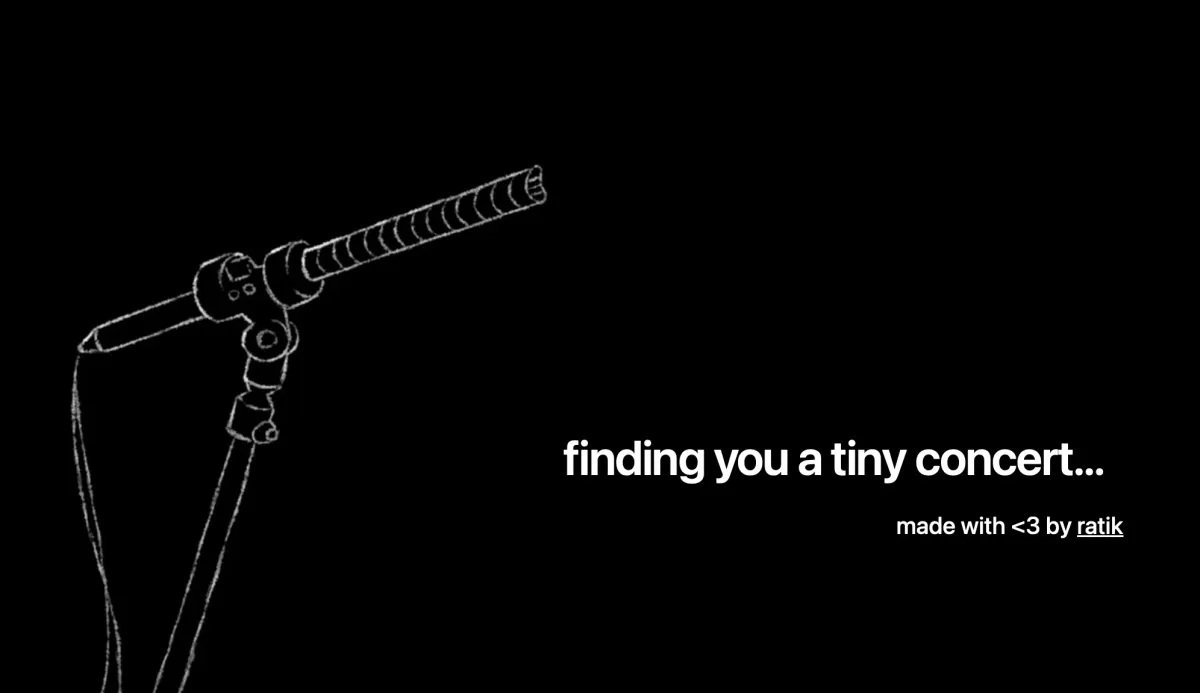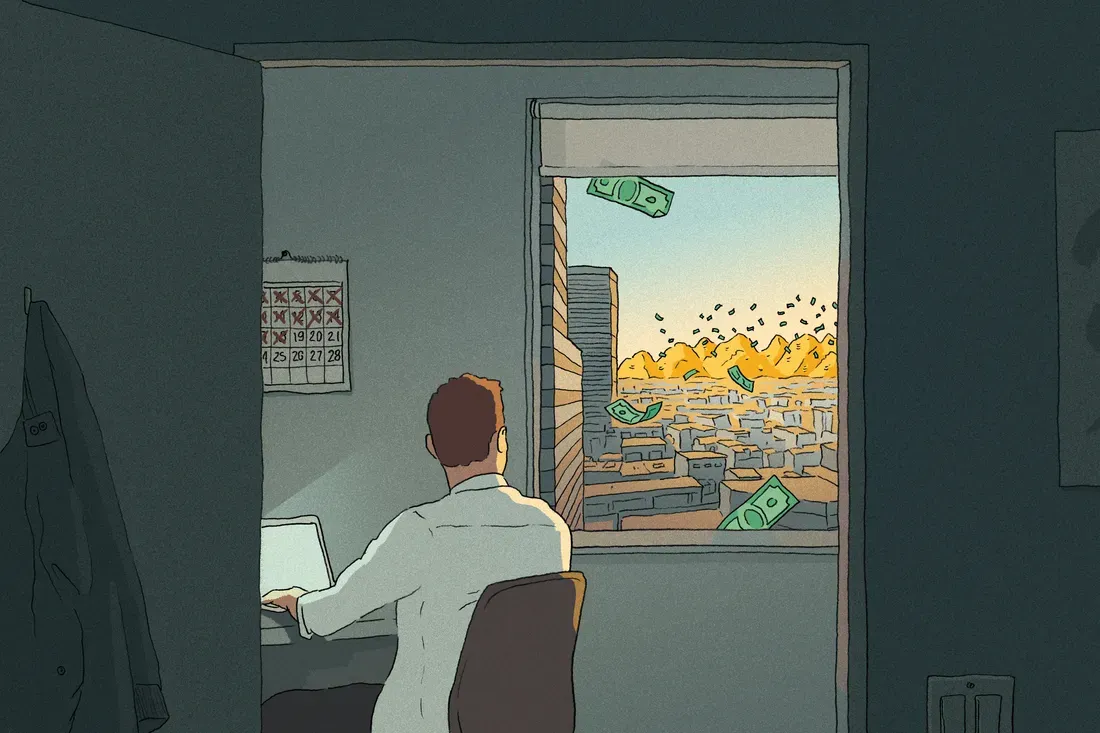Links
A collection of interesting and useful hypertextual things across which I've stumbled.
I’ve long had a bad habit of keeping waaaaay too many browser tabs open for waaaaay too long as a sort of lazy ad-hoc bookmarking system. As a change of tack, I’m making an effort to log links here instead so I can refer back to them later.
Maybe you’ll find something you like here, too.
-
Beyond The Machine
In this talk, Frank Chimero eloquently reframes his relationship with and usage of generative AI as a designer. He tries to get away from talking about it as an object of devotion, something to avoid, or simply a mere tool. Instead, he offers a more expansive line of thinking.
Lately, I’ve been thinking about my use of AI as a kind of spatial relationship. Where do I stand in relation to the machine—above it, beside it, under it? Each position carries a different kind of power dynamic. To be above is to steer, beside is to collaborate, below is to serve.
He expands on these ideas with examples of how different artists work with tech and how those relationships manifest vastly different results: Rick Rubin, in his performative guru mode, is under the machine; Brian Eno, ever the systems thinker, is beside it; and Holly Herndon and Mat Dryhurst, whose work I would like to explore more, dive right into it.
Chimero also pays respect to Hayao Miyazaki and muses on how Spirited Away could be viewed as an allegory for the bottomless hunger that LLMs have (while acknowledging Spirited Away predates the rise LLMs by decades).
-
tinydesk.now

The URL says it all. Give me a Tiny Desk Concert, and give it to me now! Tiny Desk dot Now finds a random Tiny Desk concert on YouTube and sends you on your way over to it for your listening enjoyment.
This was built by Ratik Sharma, a developer at Kagi, as a home cooked app—a small project to scratch a personal itch, with no incentive to monetize it. He’s open sourced the code on GitHub, too.
-
Designing a 100-year home in Accra

Emmanuel Quartey has been sharing the process of how he is designing and building a home for himself and his family. He’s extremely thoughtful about how the home will not only serve his family both now and in the distant future, but also how it can be "kind to the street" (I love this phrase. It’s so much more generous than "curb appeal").
He summarizes the project like so:
The goal was to create a beautiful, adaptable, care-minded home for my family which could evolve and grow gracefully with us over many generations. You’ve likely seen photos of old, stately homes, which are clearly the product of many lifetimes of care. How might we build something like that today?
He also expresses genuine surprise at the disposable nature of most modern home construction:
One of the most surprising things I’ve learned during this experience is that most modern homes are built with the intention that they last between 30 to 50 years. As in, the way they’re constructed and financed assumes that they’ll fall apart within the lifetime of the builder. […] For some reason, I had just assumed that buildings are expected to last a very long time - hundreds of years. It has been humbling to discover that in a very real way, contemporary buildings are almost disposable.
Where I live in Massachusetts, 100+ year old homes are common. But what he says rings true. With many things we buy modern life, longevity is not a priority. New(ish) home construction is no exception.
Emmanuel’s post goes in depth with the floor plans, the collaboration with his architect, design directions, and how the home can serve all the senses. If you dig into this post, it’s also worth reading the design brief he put together for the project.
-
Animated Knots
Although it’s evidently been around since the Clinton administration(!), I recently discovered Animated Knots when I was hanging a rope swing from a tree. What an amazingly useful site!
When hanging the swing, I was working with a reference photo that I couldn’t quite figure out. I fed the photo to ChatGPT, and it correctly identified that the rope was tied using a double fisherman’s bend. I then asked it for a diagram of how to tie said bend. The robot happily generated an image with 4 spectacularly idiotic steps that had nothing to do with 1) a double fisherman’s bend nor 2) one another. So I put ChatGPT down and instead queried Kagi with "how to tie a double fisherman’s bend". Its first result was Animated Knots.
Animated Knots is a prime example of the utopian ideals of the old internet, the internet of my youth, the internet I miss. It was a place where people would share their interests and high quality information freely. They weren’t doing it to make a (few billion) buck(s), but rather for the shared good. These sites are there when you need them, aren’t trying to "capture" your "eyeballs" when you don’t, and they’re not trying to sell you anything. Wikipedia is arguably the gold standard of this modus operandi. Animated Knots is another delightful example of this approach, and I’m glad to see that it’s still going strong nearly 30 years in.
-
Generative AI Is Totally Shameless. I Want to Be It
The always great Paul Ford on the addictive allure of shameless people—and shameless software.
-
50 Things I know
Fifty bits of wisdom from author Sasha Chapin. I always manage to find some useful nuggets and reminders in lists like these.
-
10 Tito Puente Essentials
Tito Puente lived locally where I grew up, and I met him on a few occasions. I never really listened to more than his most popular tracks (you know, like Oya como va). Here are some recommendations from his back catalog.
-
Things That Don't Work
- Expecting people to follow written instructions.
- Arguing with people.
- Waiting.
And other things that don’t work. As well as a few things that do.
-
What David Bowie Read

Surely, Bowie was a fascinating person who could hold court on a whole range of topics. For instance, recall his predictions of the potential impact of the Internet in 1999. Anyway, here’s a list of books he was known to have read.
-
Challenges in Solopreneurship

My friend Joel Olivera’s account of the lonely and difficult road of trying to build and grow a SaaS as a solo founder.
-
Confessions of a Middle-Class Founder

An anonymous account of adventures in founding a VC-backed startup, and how it might not be everything they hoped for and dreamed of.
-
How To Buy Legit Extra Virgin Olive Oil
It’s surprisingly hard to find genuine extra virgin olive oil. Misdirection, obfuscation, and outright scams abound. Here are some tips which Johnny Harris and his team put together for a video essay about the olive oil industry.
-
The Ambient Machine

Lots of unlabeled switches, all for creating a soundscape of ambient sounds and music, packaged in a beautiful ash wood box. I mean, just look at that thing! What’s not to love?
-
Color Formats in CSS
Josh Comeau dives into the various color formats available to us in CSS, from trusty old
HEXandRGBthrough modern formats likeLCH, and when we’d want to use which. -
Make Something Wonderful: Steve Jobs in his own words

Quotes, letters, and all around inspiration from Steve Jobs. Also a really wonderful example of a book-as-website.
-
OKLCH in CSS: why we moved from RGB and HSL
From the mad development geniuses at Evil Martians, a deep dive into the hows and why of using OKLCH for specifying colors in CSS. They even built a handy conversion tool to translate old school colors into OKLCH.
-
Starting a Startup
A handy overview on various aspects of launching a startup business, including thoughts on market pull, finding customers, and hiring.
-
A Field Guide to the Musical Leitmotifs of “Star Wars”

A brief overview of Frank Lehman’s catalog of Star Wars Leitmotifs from the New Yorker.
